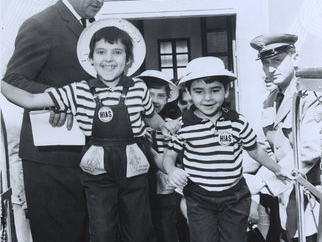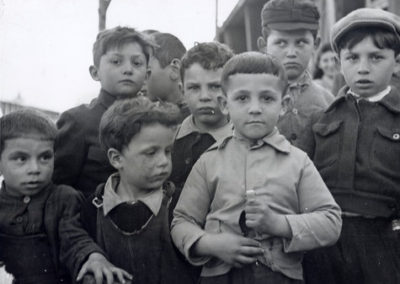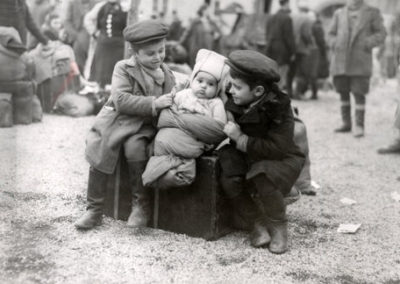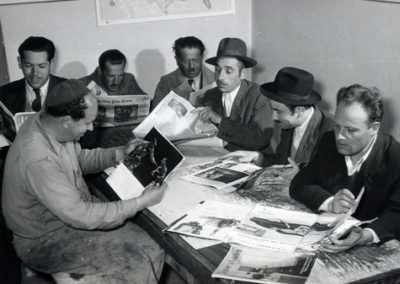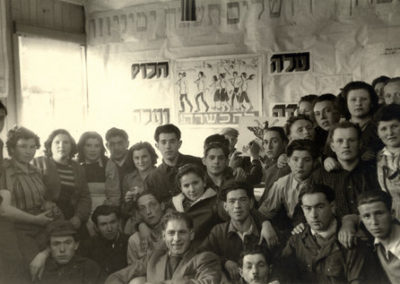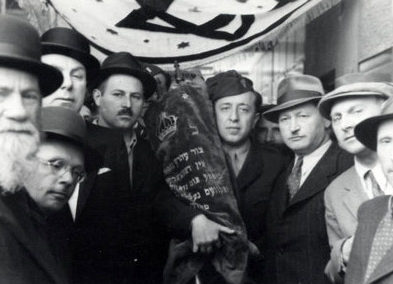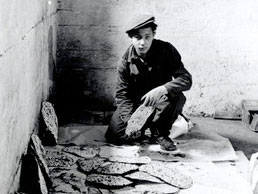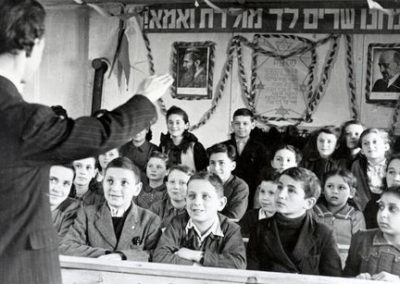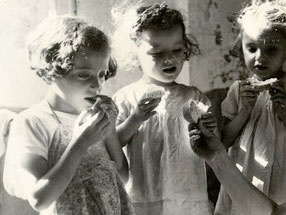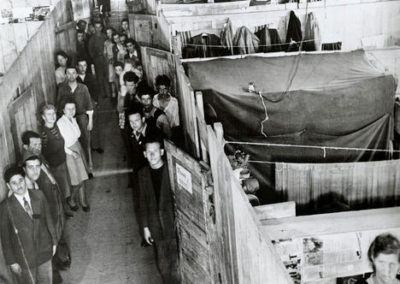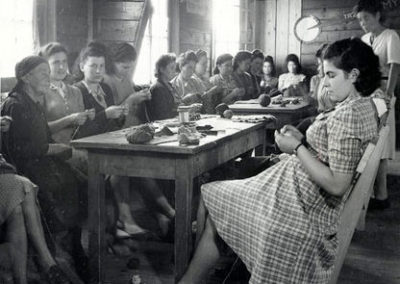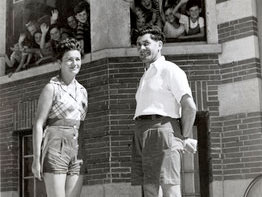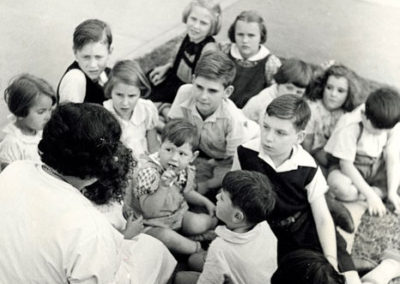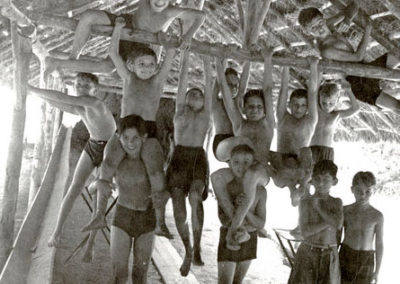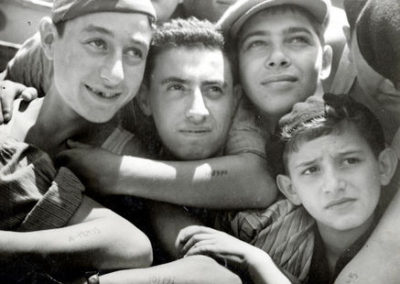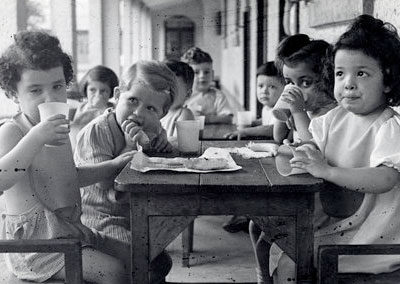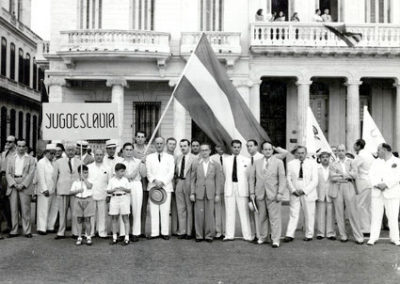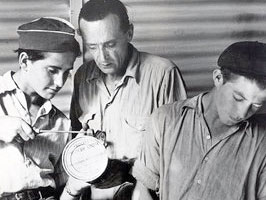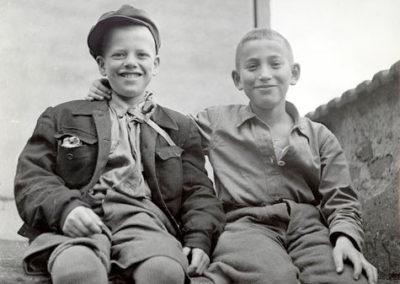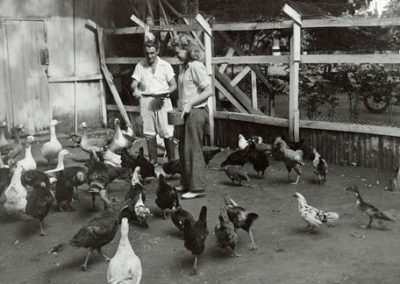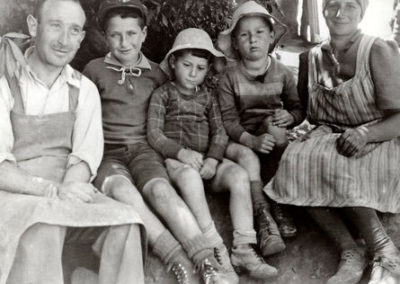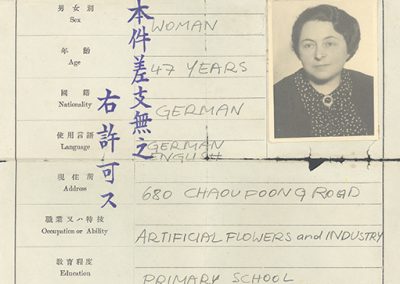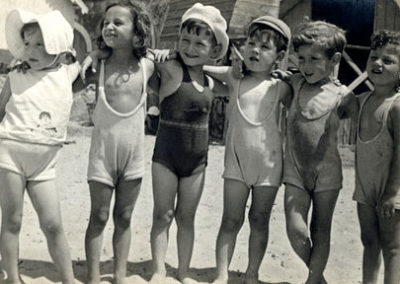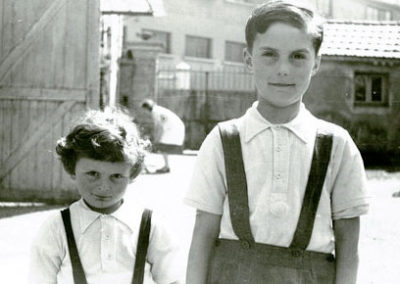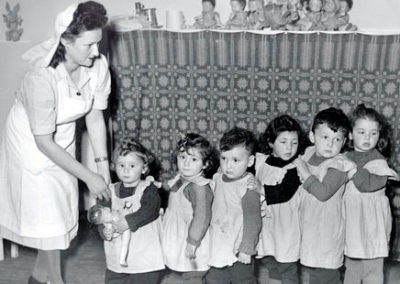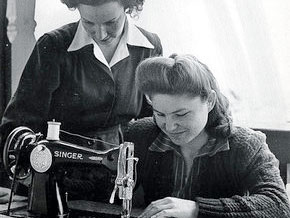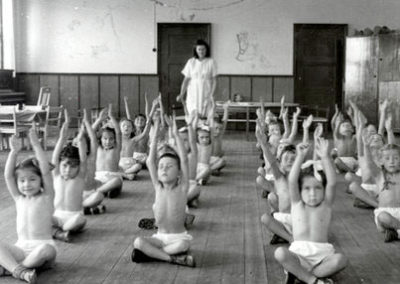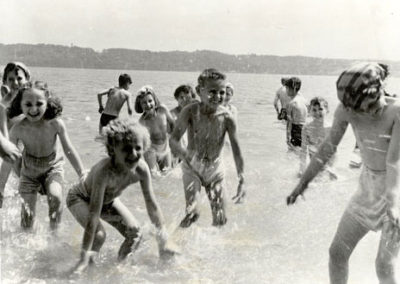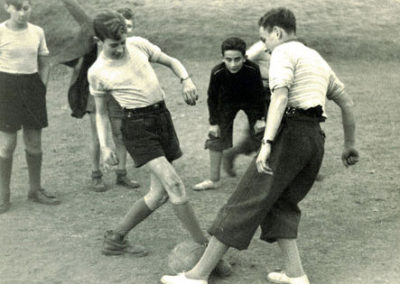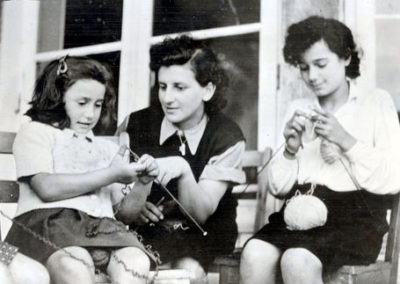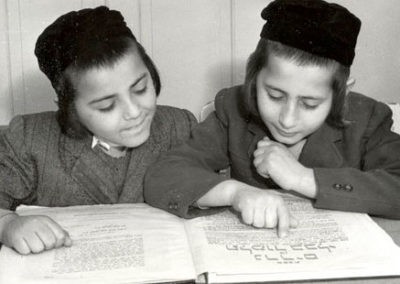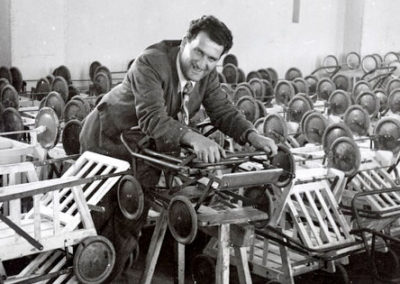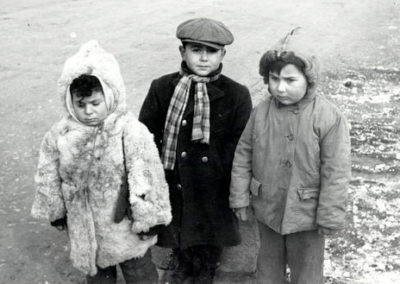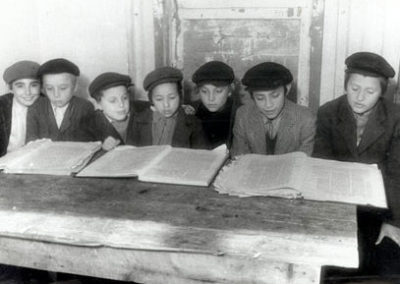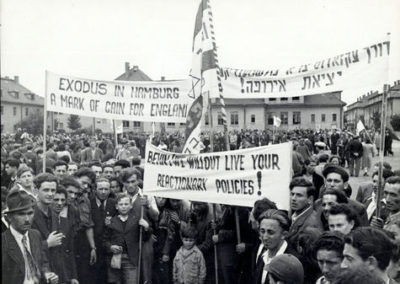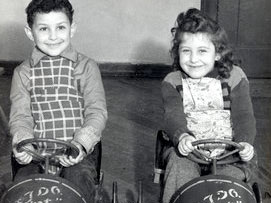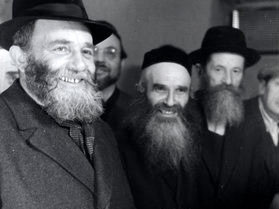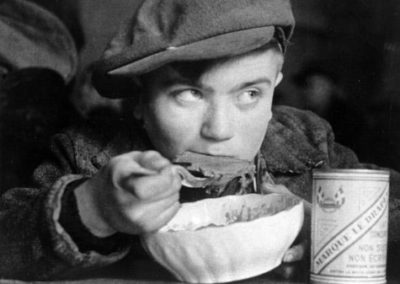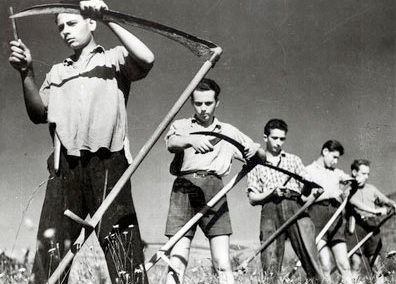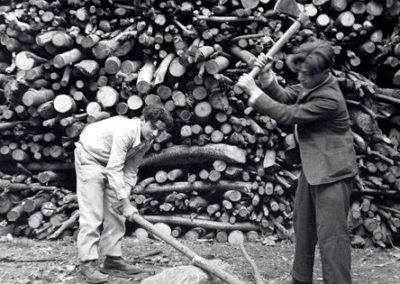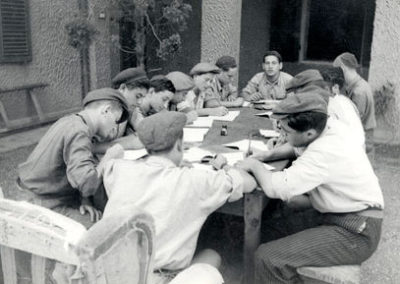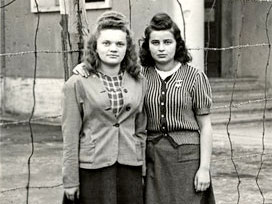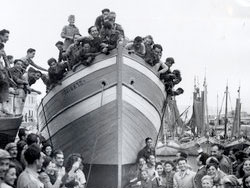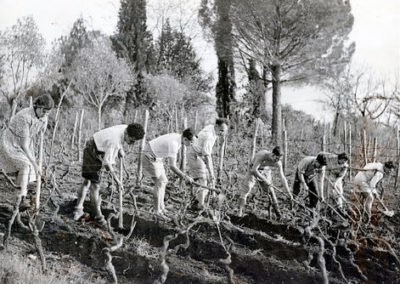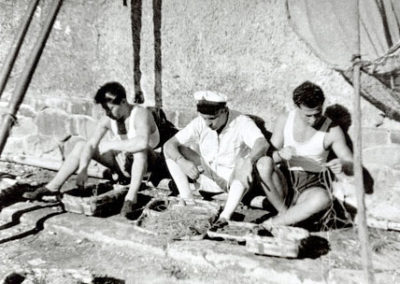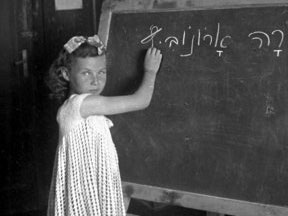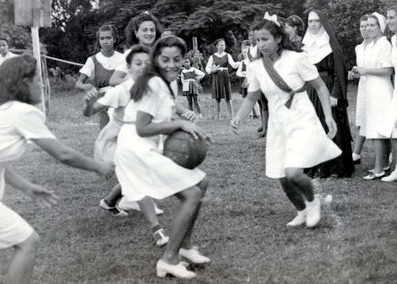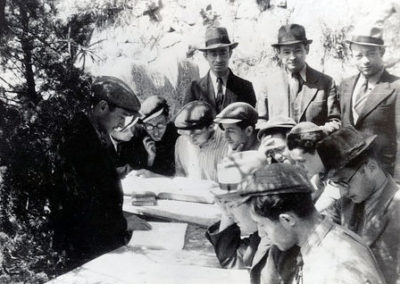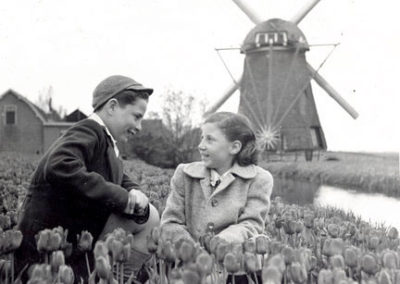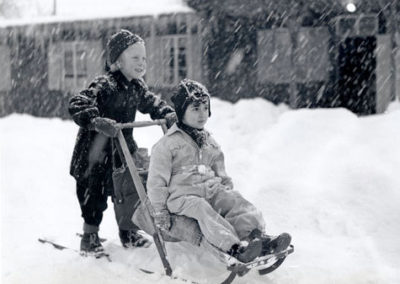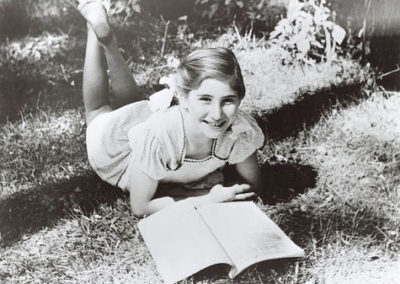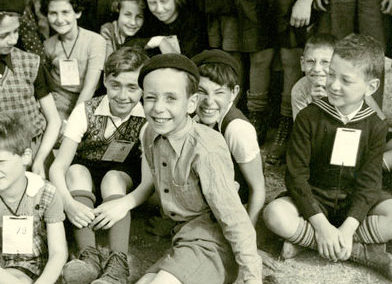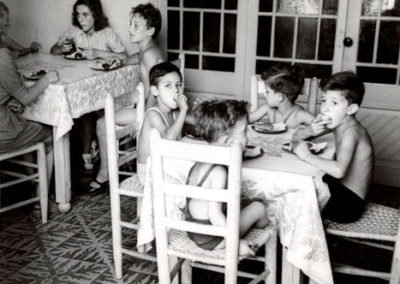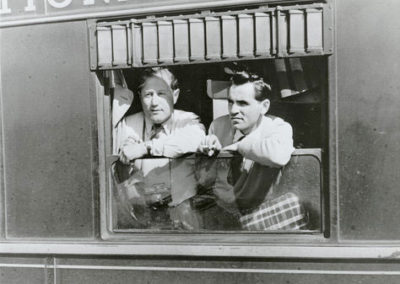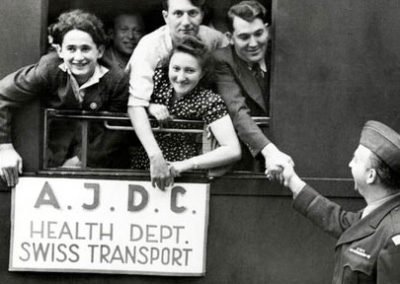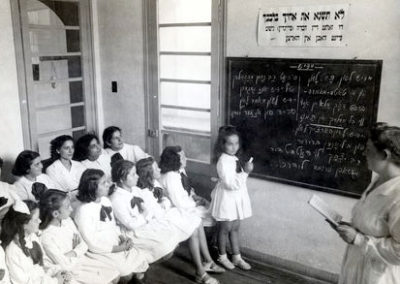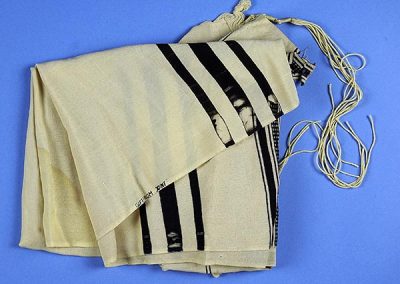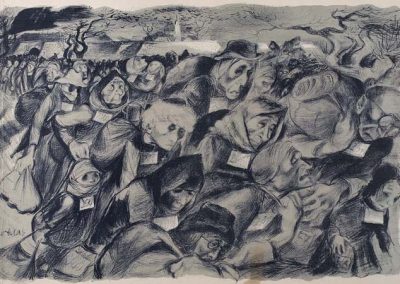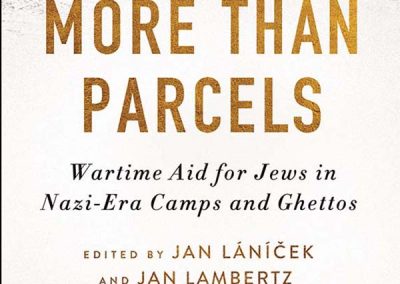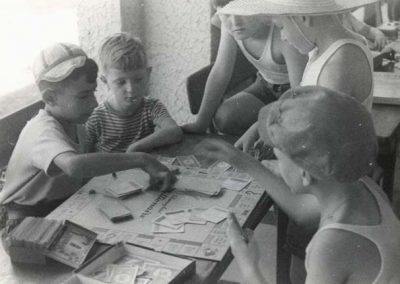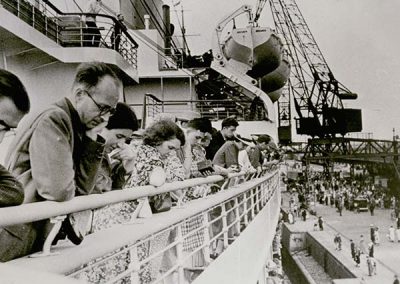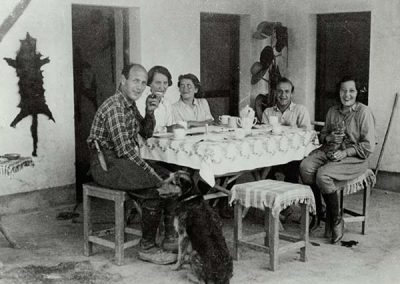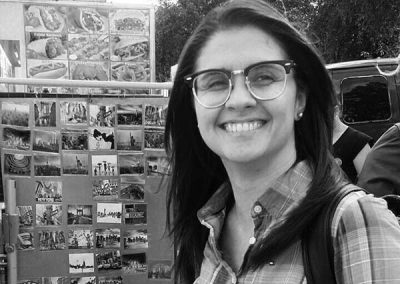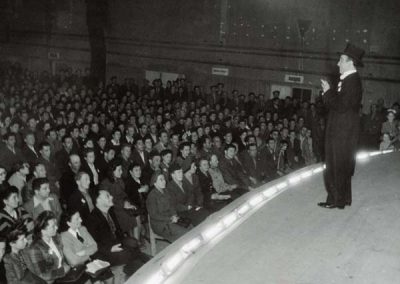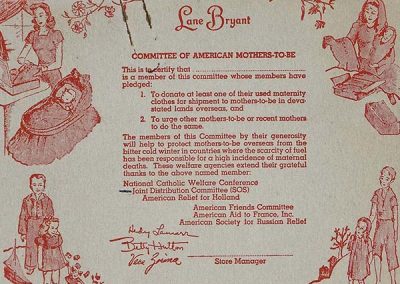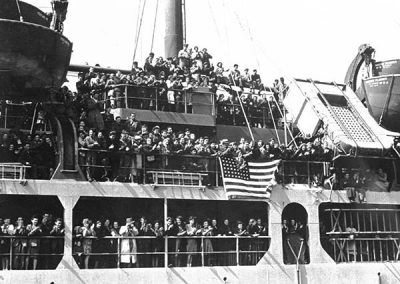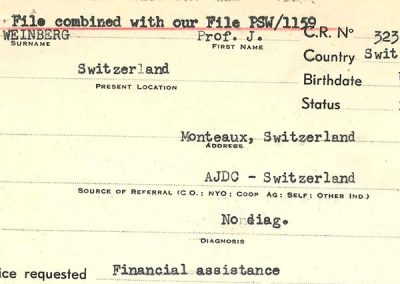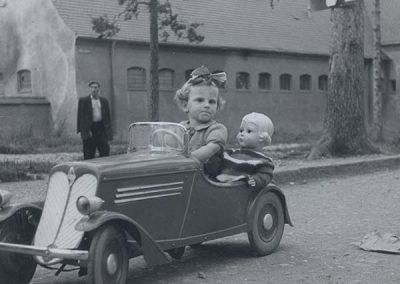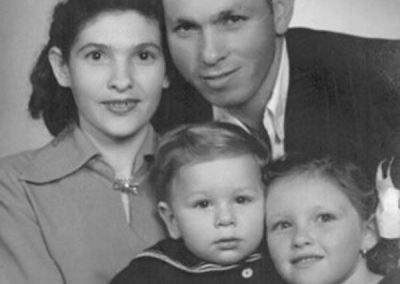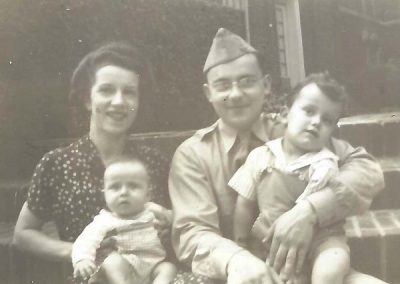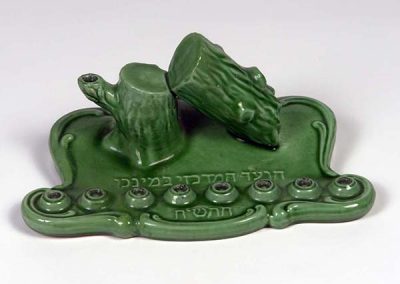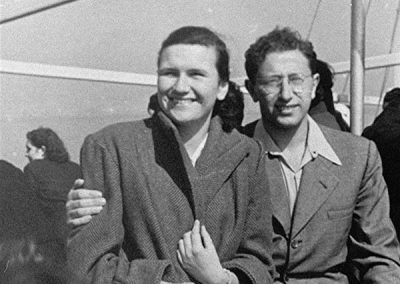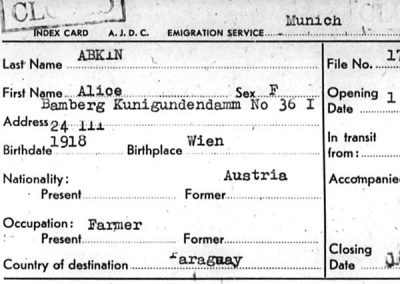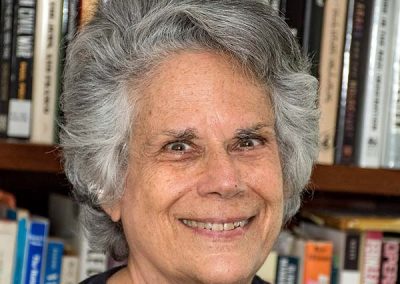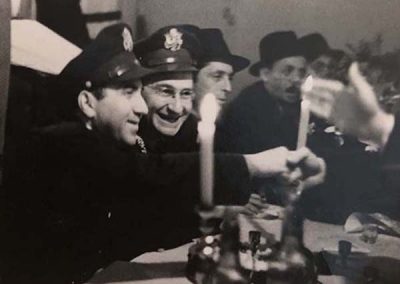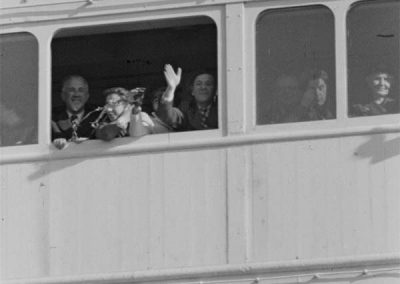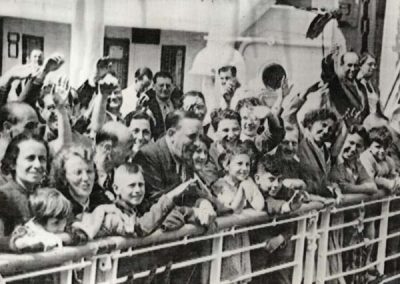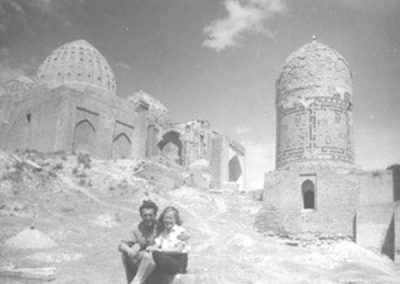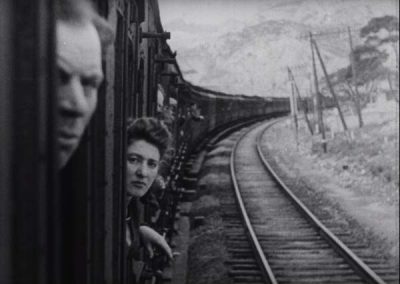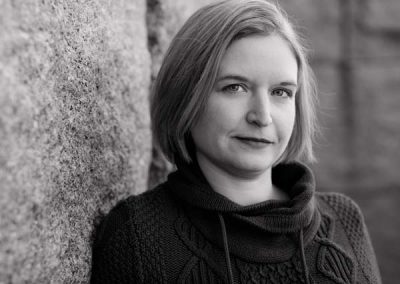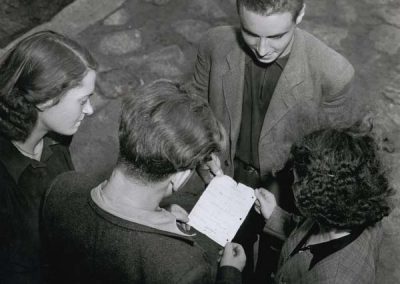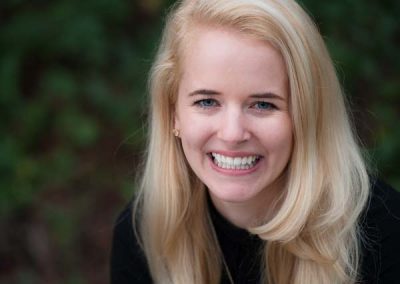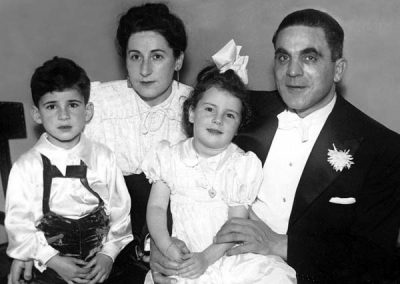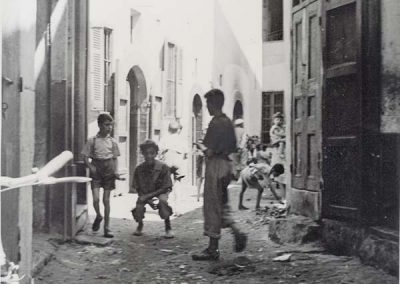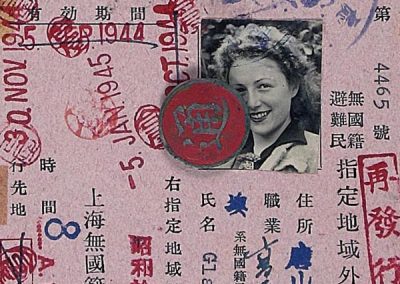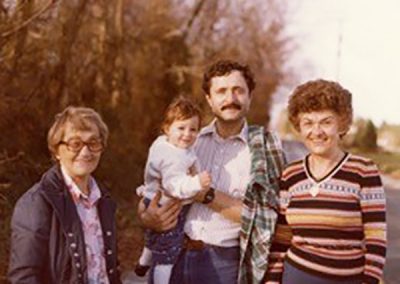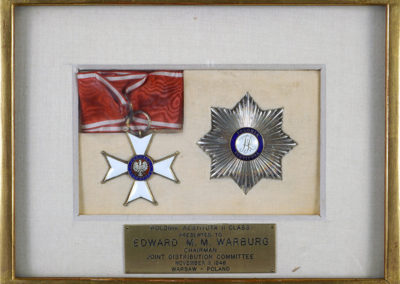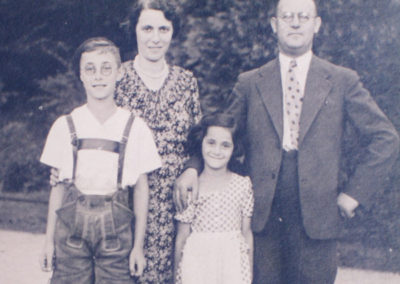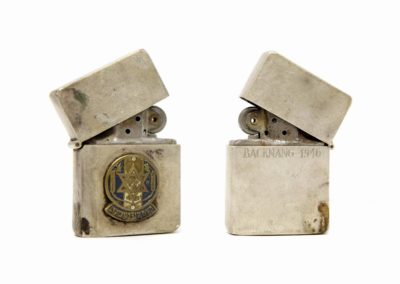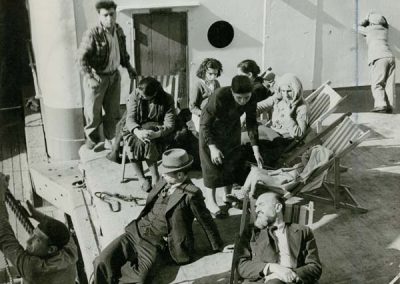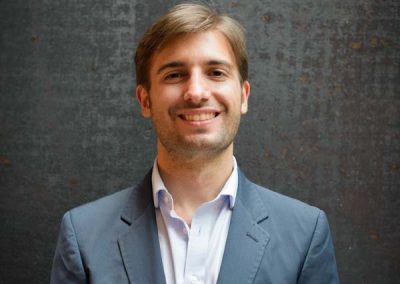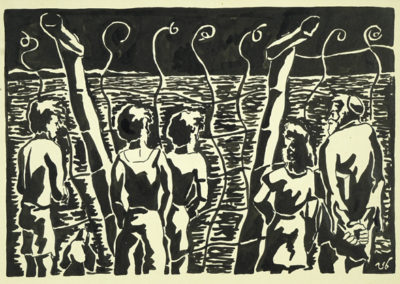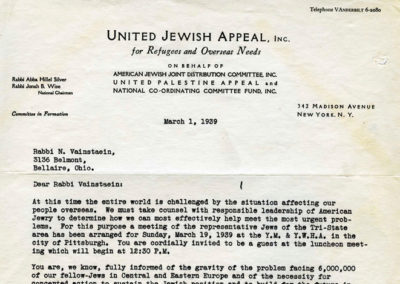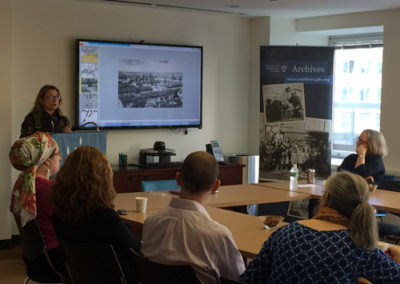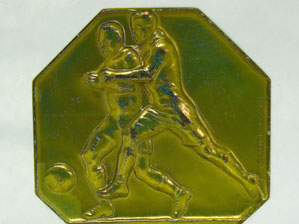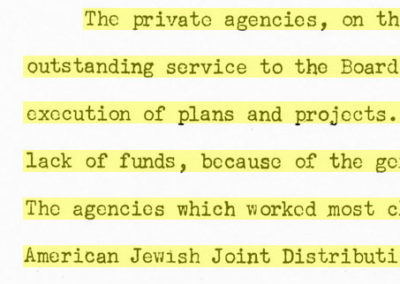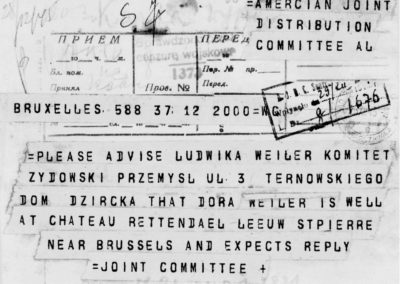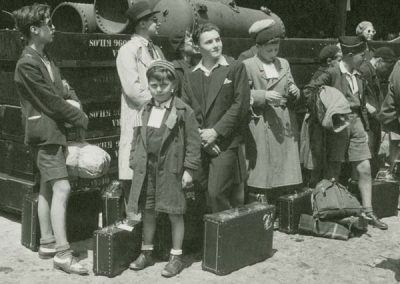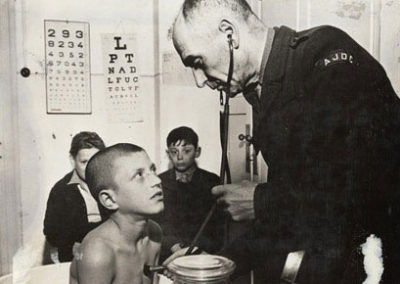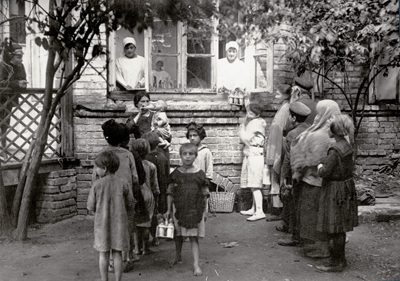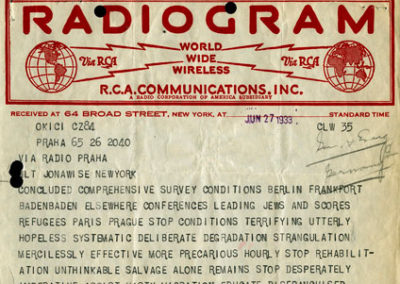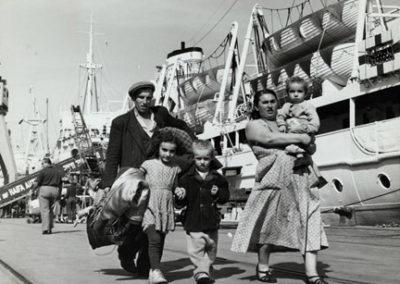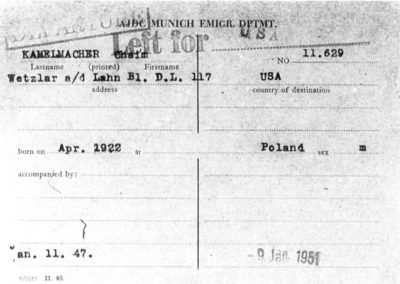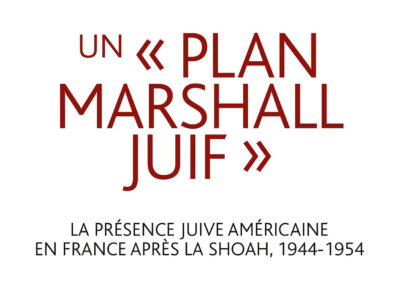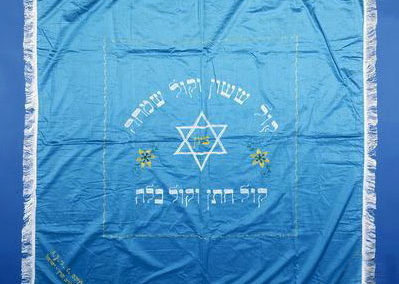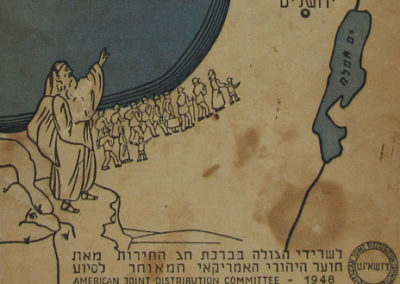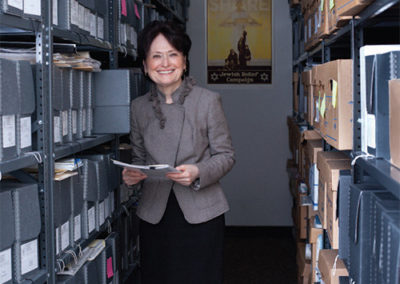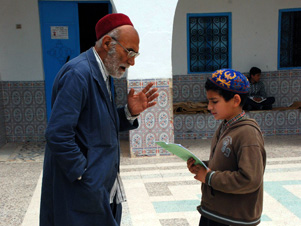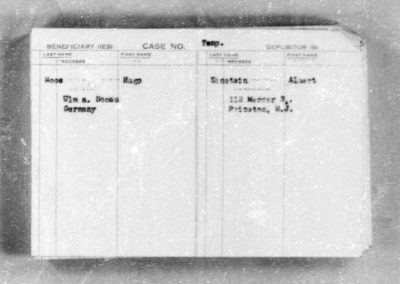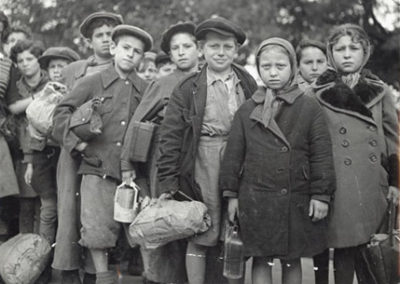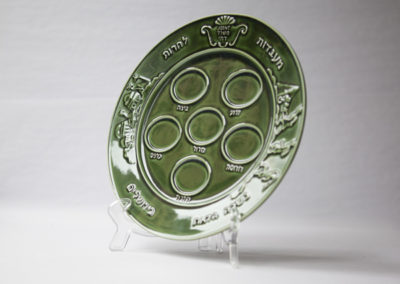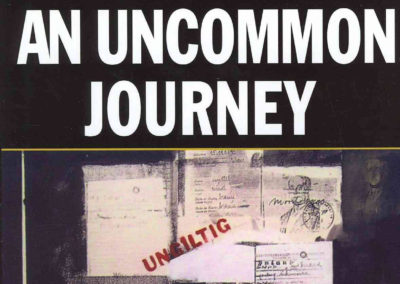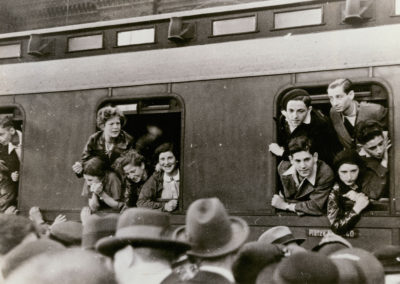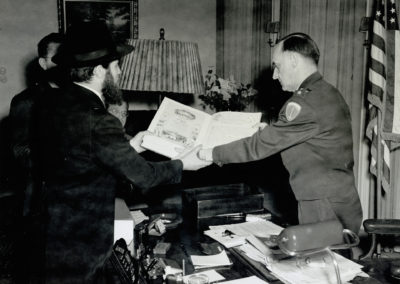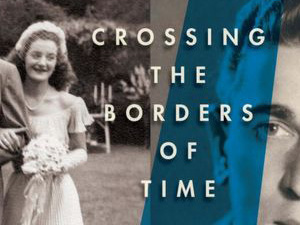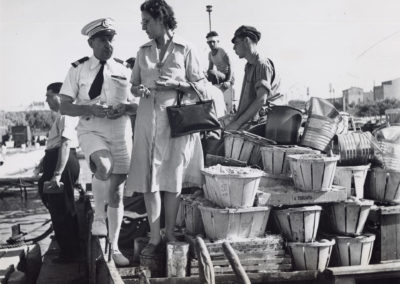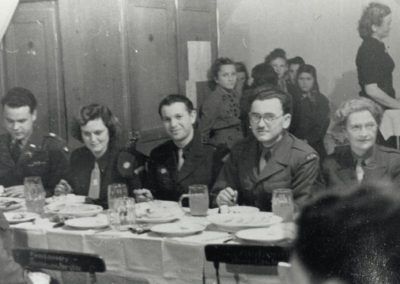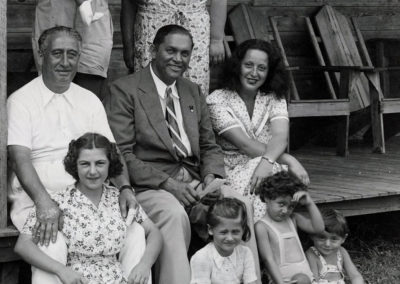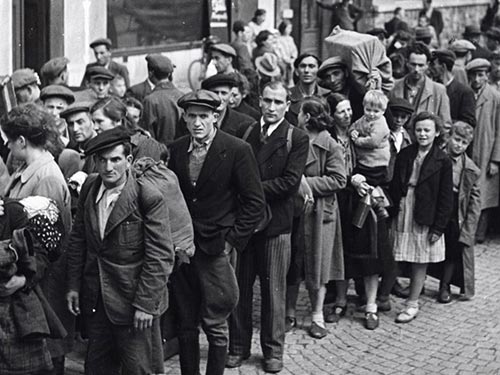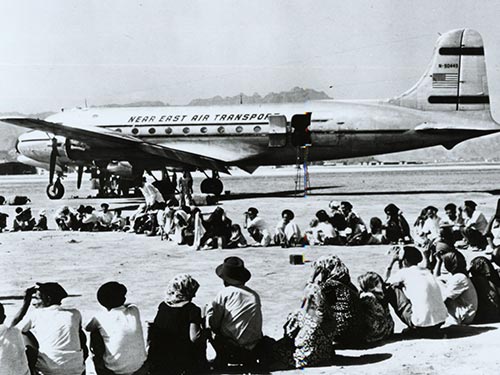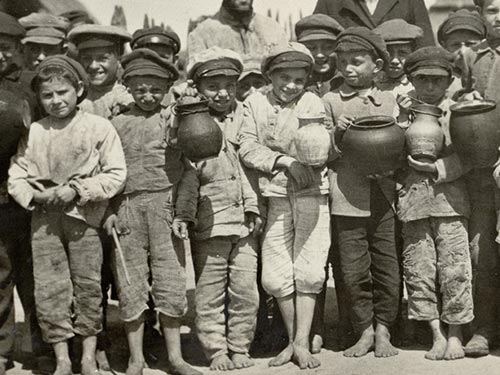World War II-Era Refugees and Displaced Persons
JDC worked with HICEM (the Jewish Overseas Emigration Association) to facilitate and finance the emigration of children without American relatives.
Lisbon, Portugal, June 1941.
With the rise of Nazism, JDC spearheaded an intensive emigration effort, working to identify escape routes and safe havens. It helped refugees obtain visas and transport, provided assistance en route, and aided many once they reached their destinations. After the war, JDC successfully advocated for the creation of separate Jewish Displaced Persons camps in which JDC provided supplementary food and clothing, set up schools and vocational training programs, and supported the revival of Jewish learning and religious renewal. It then turned again to emigration assistance, helping to arrange for the survivors to begin new lives in Palestine, North and South America, Australia, and Western Europe.
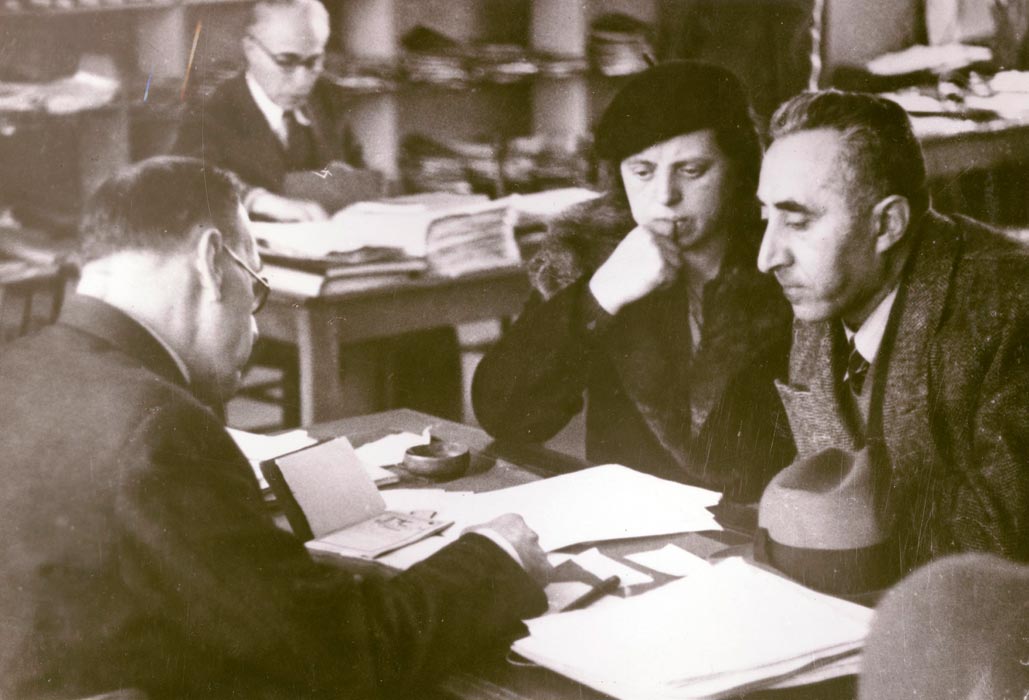
Refugees meeting with a staff member of the Committee for Refugee Assistance
The couple is likely to be seeking help to get immigration papers.
Paris, France, late 1930s-early 1940s.
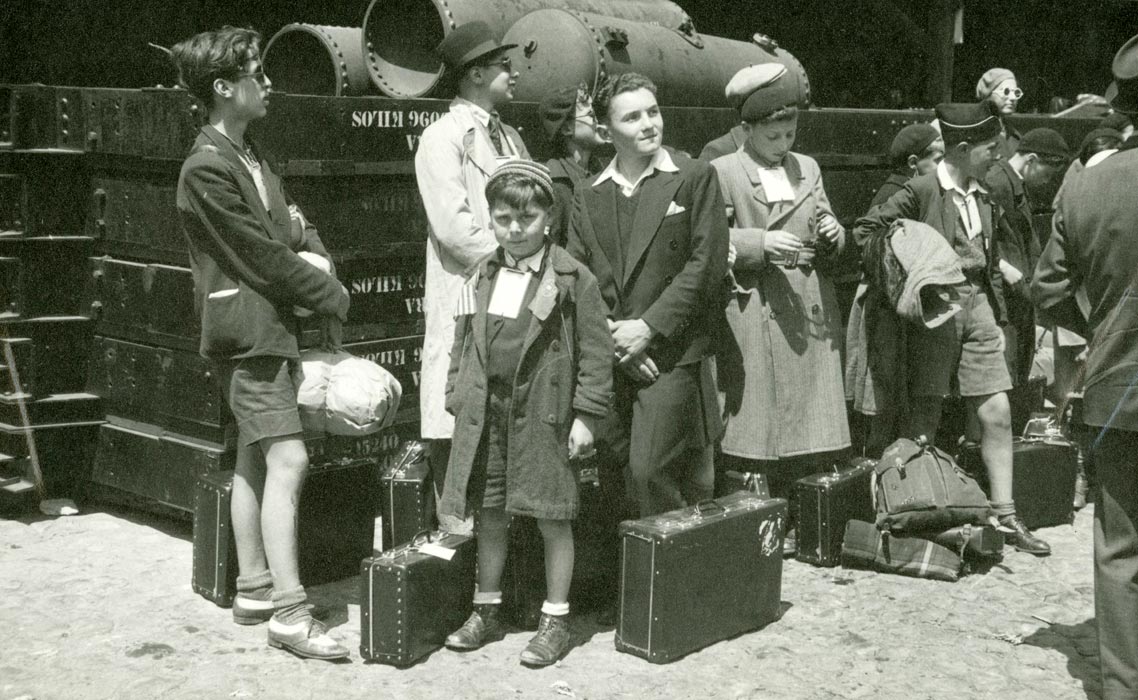
French children with their baggage await boarding the S.S. Mouzinho, which will take them from Lisbon to New York
JDC worked with HICEM (the Jewish Overseas Emigration Association) to facilitate and finance the emigration of children without American relatives.
Lisbon, Portugal, June 1941.

Cable from JDC representative Saly Mayer to JDC New York headquarters
In this cable sent shortly after the end of the war in Europe, Mayer outlines the enormous challenges the survivors face and the immediate needs that JDC can meet.
St. Gallen, Switzerland, June 14, 1945.
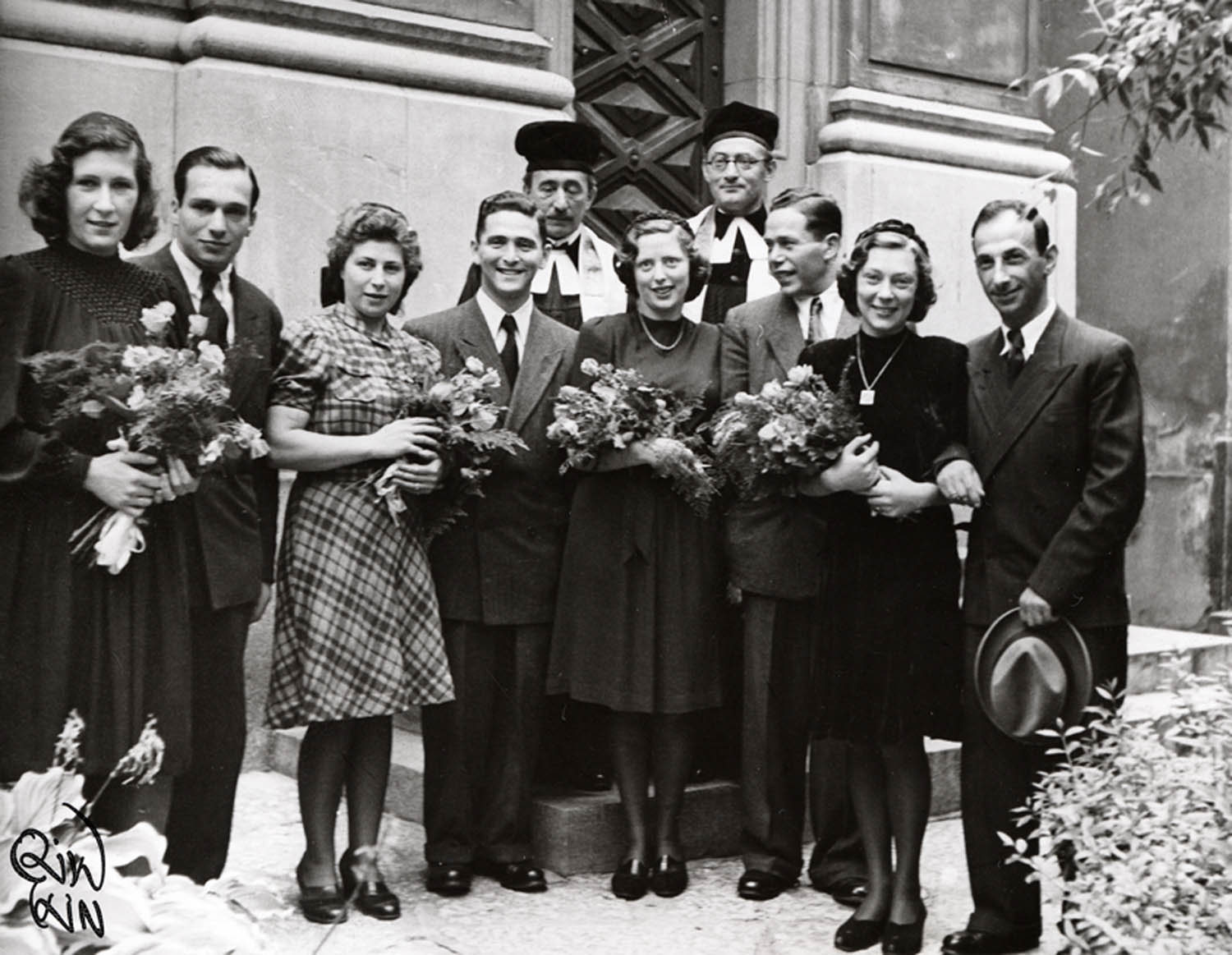
The wedding of four refugee couples who met in the DP camps
The couples stand outside the Stockholm synagogue with the officiating rabbis.
Stockholm, Sweden, c.1945. Photograph: Anna Riwkin.
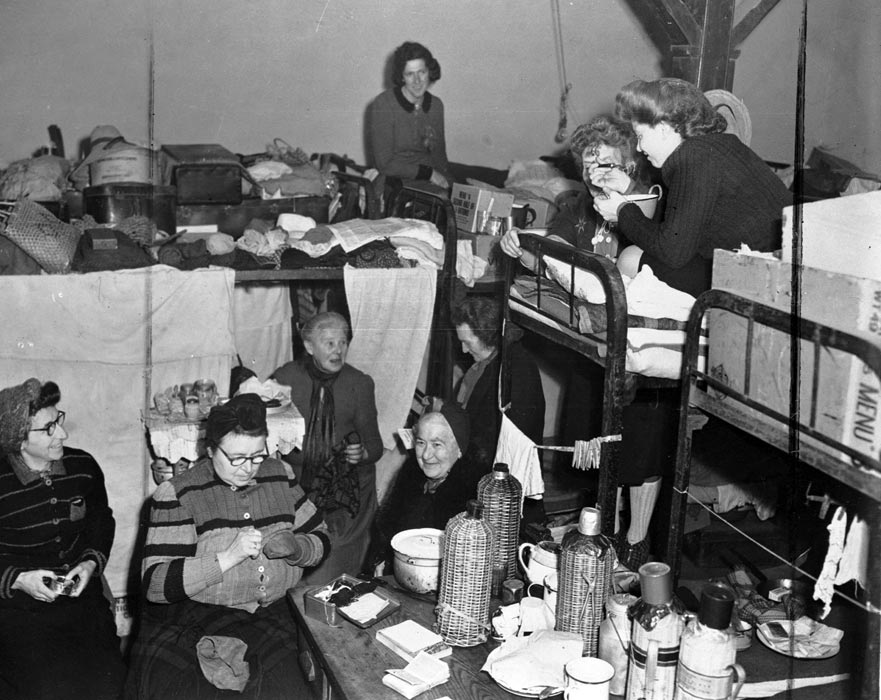
Crowded living conditions for Jewish refugees in Shanghai
JDC provided assistance to the Jewish refugees who had fled from Europe to the open port of Shanghai. After the war and subsequent Communist victory, JDC provided emigration assistance.
Shanghai, China, c.1946.
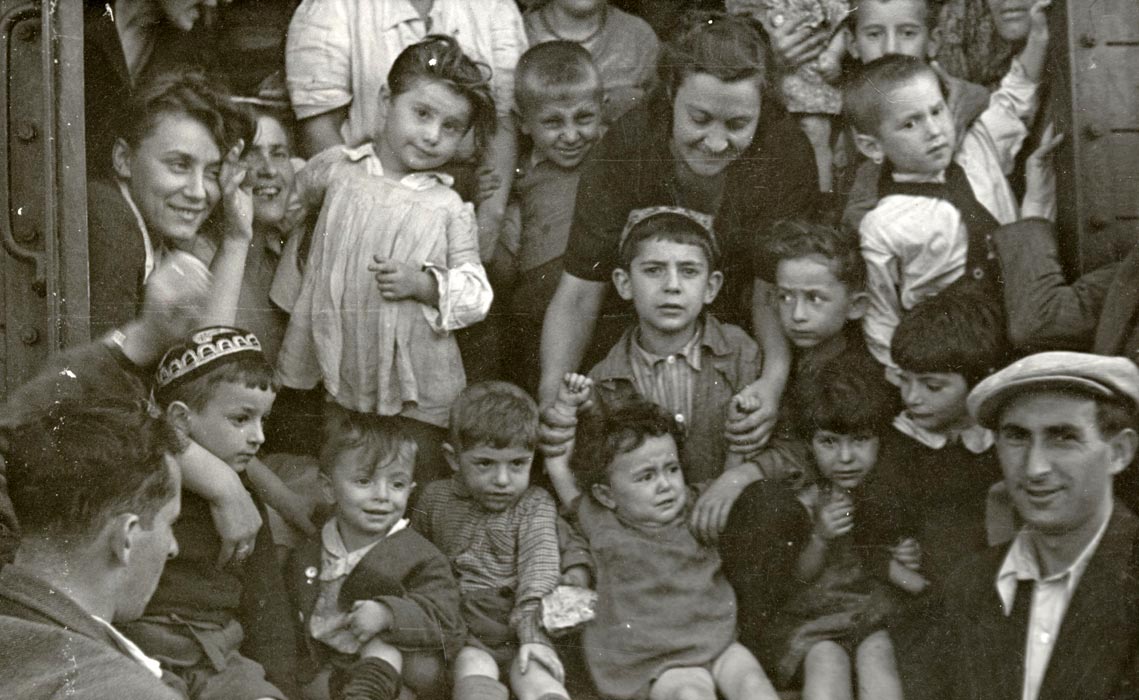
Polish orphans travelling from Czechoslovakia to Vienna
The care of orphaned children was a JDC priority. Once these children had recovered in a transit camp, they were sent on to JDC children’s homes in France, Switzerland, and elsewhere, or to children’s sections of the DP camps.
Vienna, Austria, 1946. Photograph: Wolf Schaerf.
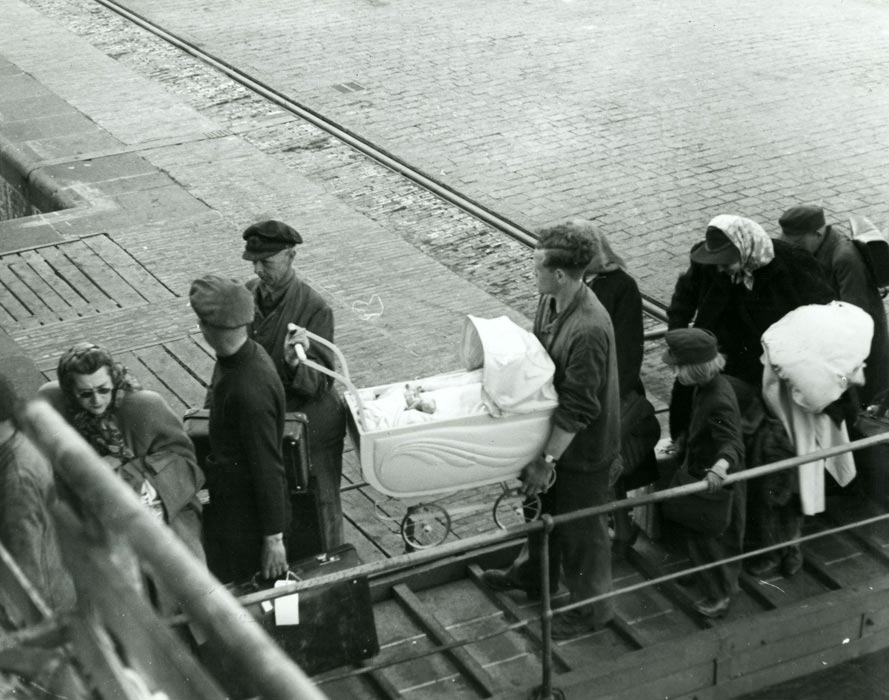
Men carry a baby on board the S.S. Marine Flasher bound for the United States
This was the first ship to bring DPs to the United States as immigrants under the Truman Directive, under which visas were made available to refugees, primarily for orphaned children.
Bremerhaven, Germany, May 1946. Photograph: Al Taylor.
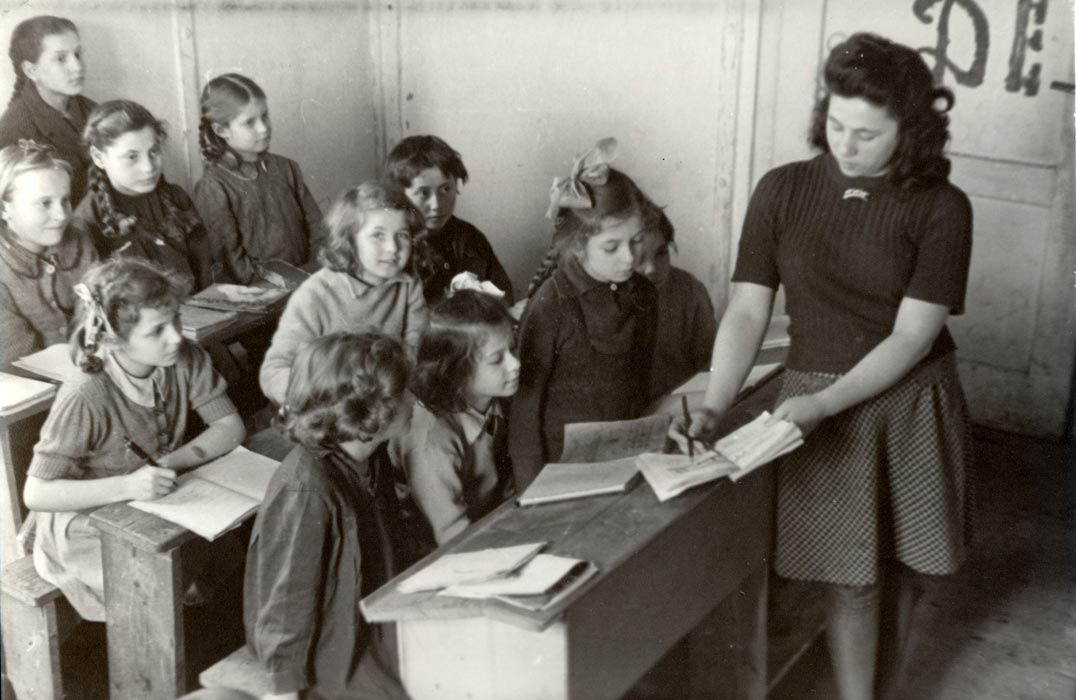
A class in the school at the Riedenburg DP camp
The school in this camp was largely run by JDC.
Salzburg district, Austria, 1940s. Photograph: Jan Breit.
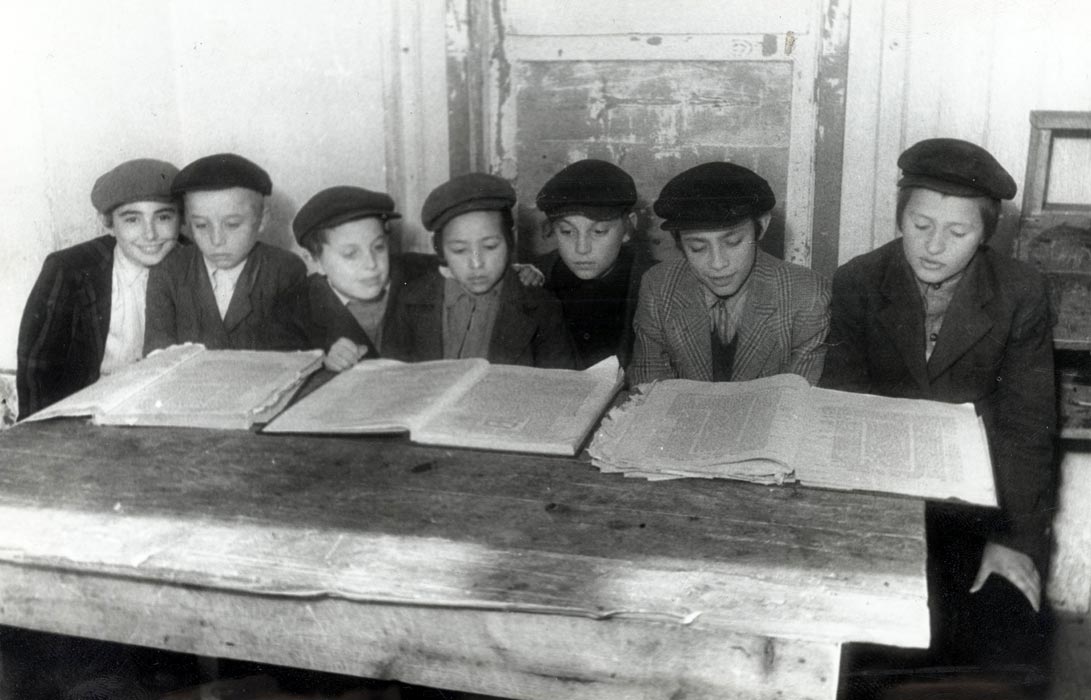
Students of the Lubavitch Yeshiva at the Pocking DP camp
JDC provided supplementary food grants to all refugee students in Germany and supplied them with textbooks, school equipment, and both literary and religious publications.
Pocking, Germany, 1940s.
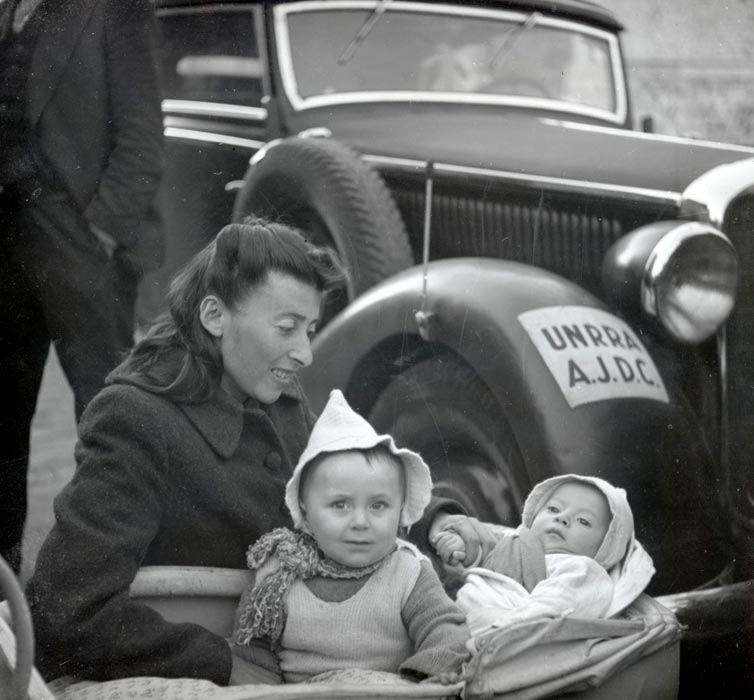
A Jewish refugee from Poland with her two children arrives at a DP camp
When the first survivors arrived at the Babenhausen camp, converted from a wartime prisoners’ barracks, conditions remained deplorable. JDC’s efforts helped them turn the camp into a substantial community with several schools.
Babenhausen, near Darmstadt, Germany, c.1947.
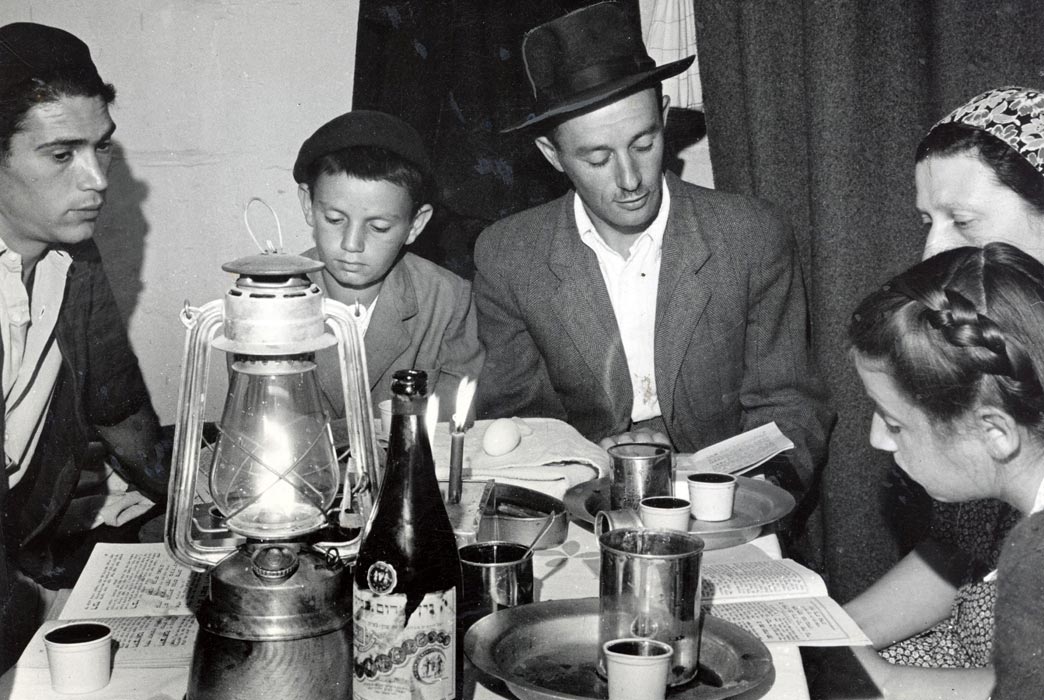
Detainee family at a seder in a tin Nissen hut in the Cyprus detention camps
Jews attempting to enter Palestine illegally were detained by the British and placed in camps on Cyprus. JDC worked in these camps to provide supplementary food and educational and recreational opportunities. It also provided religious items, including Passover matzah.
Cyprus, late 1940s. Photograph: Al Taylor.
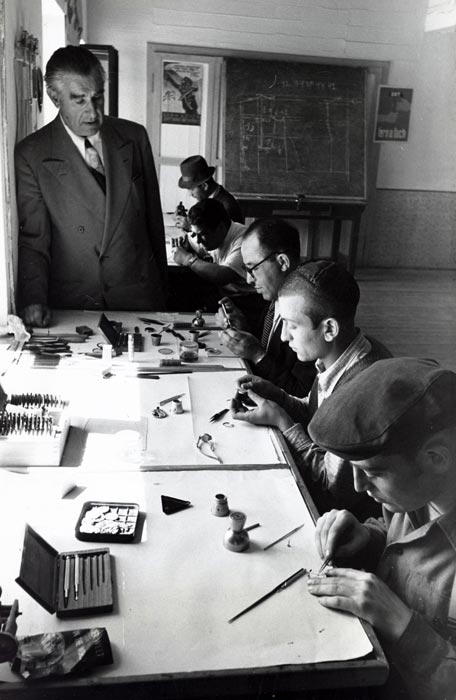
Watch repair vocational program in the Foehrenwald DP camp
Harry D. Henschel, Vice President of the Bulova Watch Company, watching students in an ORT watch repair program. The company collaborated with JDC to help rehabilitate Jewish refugees living in DP camps.
Foehrenwald, Germany, c.1948.
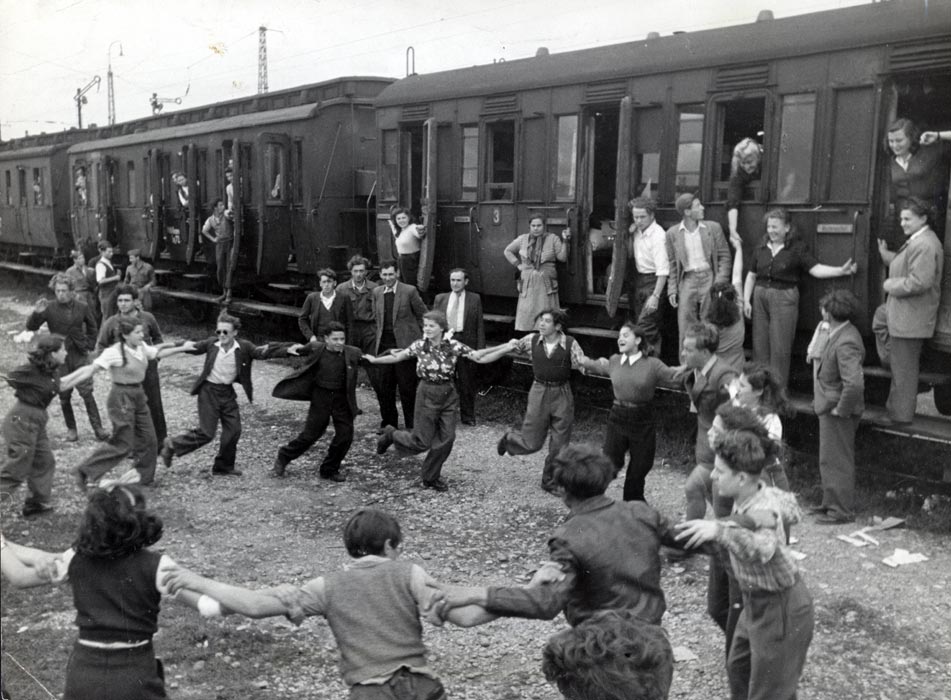
Jewish youngsters dance the traditional hora at train side in Munich as they prepare to leave Germany for Israel
The group will travel by train to Marseilles, where it will embark for Haifa. They were among the first 600 DPs in Germany to receive Israeli visas.
FMunich, Germany, c.1948.
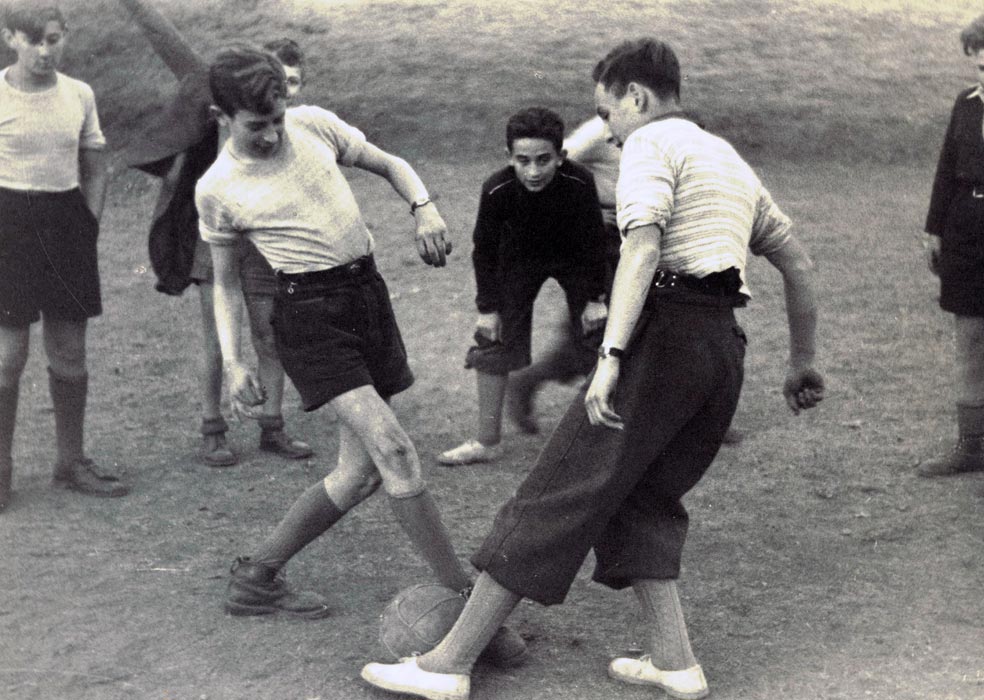
Young refugees playing soccer at Camp Foehrenwald
Foehrenwald was the last of the DP camps to close, in 1957.
Foehrenwald, Germany, 1950s.
Everything Possible: JDC and the Children of the DP Camps
Following World War II, JDC provided critical services to European Jews in the displaced persons (DP) camps established by the Allied Armed Forces. JDC placed special attention on the unique needs of the growing population of children in the camps.
Galleries
News and Articles
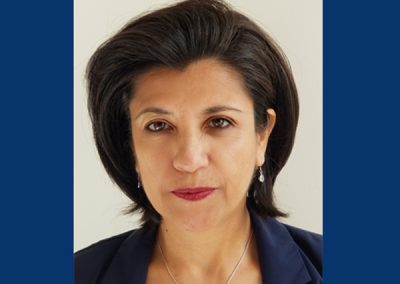
Sandra Gruner-Domić Lectures on Bolivia, a Forgotten Refuge During the Holocaust: Jewish Immigration 1937-1941
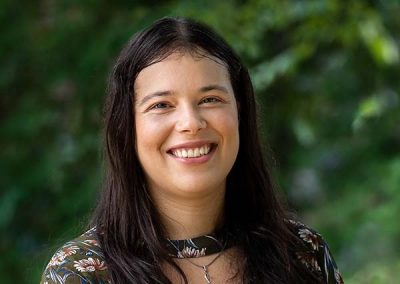
Alexandra Kramen Lectures on the Struggle for Holocaust Justice in the Jewish Displaced Persons Community of Föhrenwald, 1945-1957

New Book—From Left to Right: Lucy S. Dawidowicz, the New York Intellectuals, and the Politics of Jewish History

